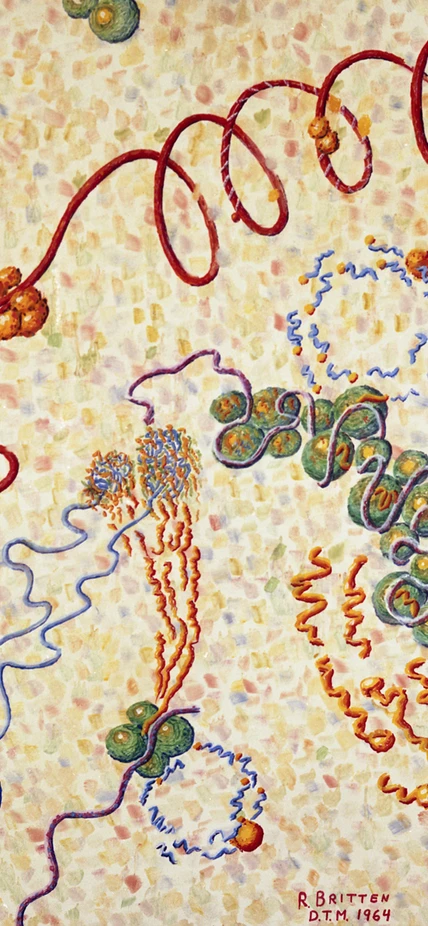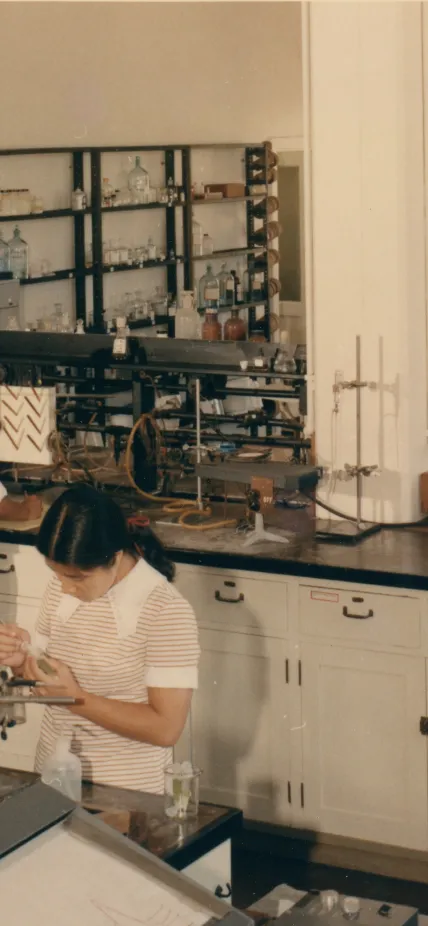In the years following World War II, a small group of physicists at Carnegie Science's former Department of Terrestrial Magnetism (DTM), which is now part of the Earth and Planets Laboratory, made an unusual transition from nuclear physics to the study of living cells. The Biophysics Section, formed in 1946, was a cutting-edge venture that applied the methods and tools of nuclear physics to fundamental questions in biology. This interdisciplinary group would make significant contributions to the emerging field of molecular biology, demonstrating how expertise from one scientific discipline could help open new pathways in another.
From Nuclear Physics to Biology
The origins of the Biophysics Section traced back to the arrival of physicist Merle Tuve at DTM in 1926. Driven by an interest in the atomic nucleus, Tuve and his DTM colleagues Lawrence Hafstad and Norman Heydenburg and, in collaboration with Gregory Breit of the University of Wisconsin Madison, installed cutting-edge Van de Graaff generators on the Broad Branch Road campus. They used these novel instruments to measure proton-proton and proton-neutron collisions and scattering, making significant discoveries about atomic forces. By the 1930s, DTM had become a leading center for nuclear physics.
The department’s cutting-edge equipment soon drew the interest of biologists. A local cancer researcher requested time to bombard frog eggs with high-speed protons. A visiting Carnegie plant biologist used radioactive carbon to study photosynthesis. A researcher from Carnegie’s Department of Embryology worked with DTM’s Richard B. Roberts to trace molecular transfer from mother to embryo in rats. Tuve himself collaborated on studies of the mutagenic effects of neutrons on fruit flies with scientists from Carnegie’s former Department of Genetics.
By 1939, the demands from biologists had grown so substantial that roughly half of the time on DTM's newly completed pressure Van de Graaff generator was devoted to biological experiments. Recognizing this momentum, DTM decided to build a 60-inch cyclotron specifically designed to produce tracer isotopes for use by biologists throughout the Washington and Baltimore region.
It was arranged for Dean Cowie, a fellow of the National Cancer Institute to assist the biologists’ work with the department’s instruments. Then Philip Abelson arrived from the University of California Berkeley to help design the new cyclotron.
World War II temporarily derailed these plans, diverting Carnegie's physicists to war-related research. Cowie kept the project alive at DTM and the cyclotron finally began operation in 1944. For a time, it provided an important service for the local scientific and medical communities, operating around the clock to meet demand.
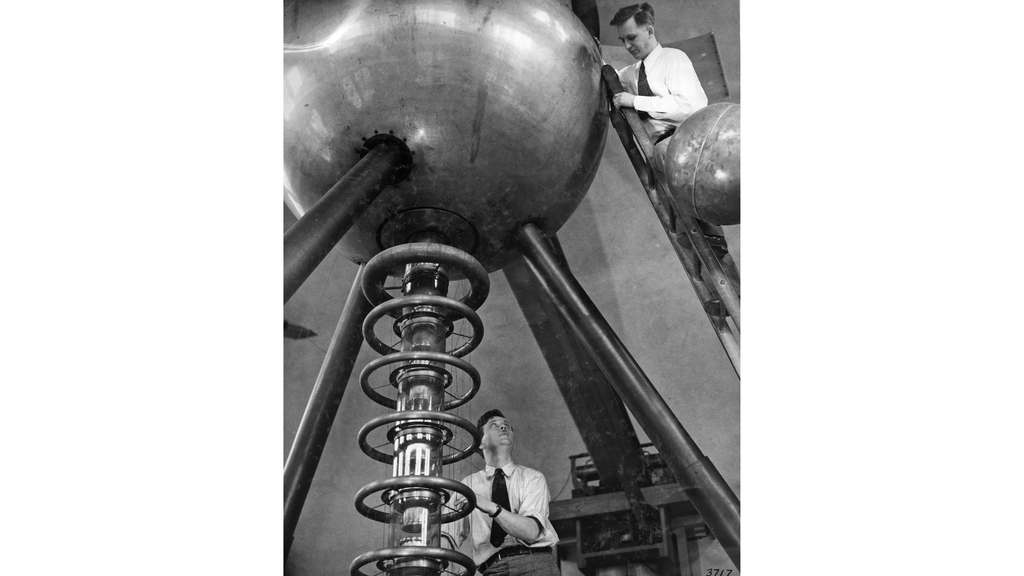
Merle Tuve (right) and a colleague working with the high-voltage generator at DTM. By the 1930s, the department had become a leading center for nuclear physics.
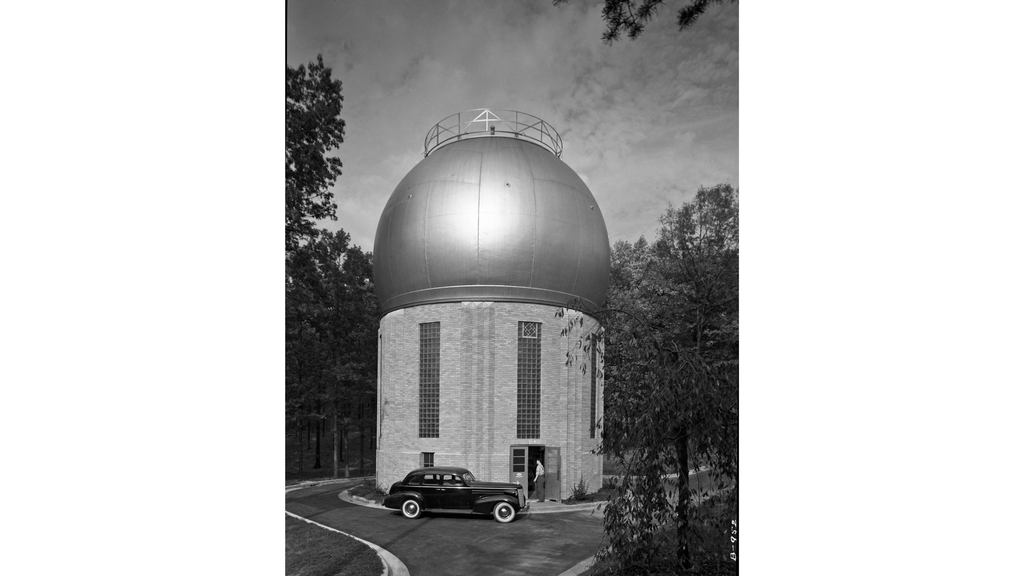
By 1939, the demand from biologists had grown so substantial that roughly half of the time on DTM's newly completed pressure Van de Graaff generator, shown here, was devoted to biological experiments.
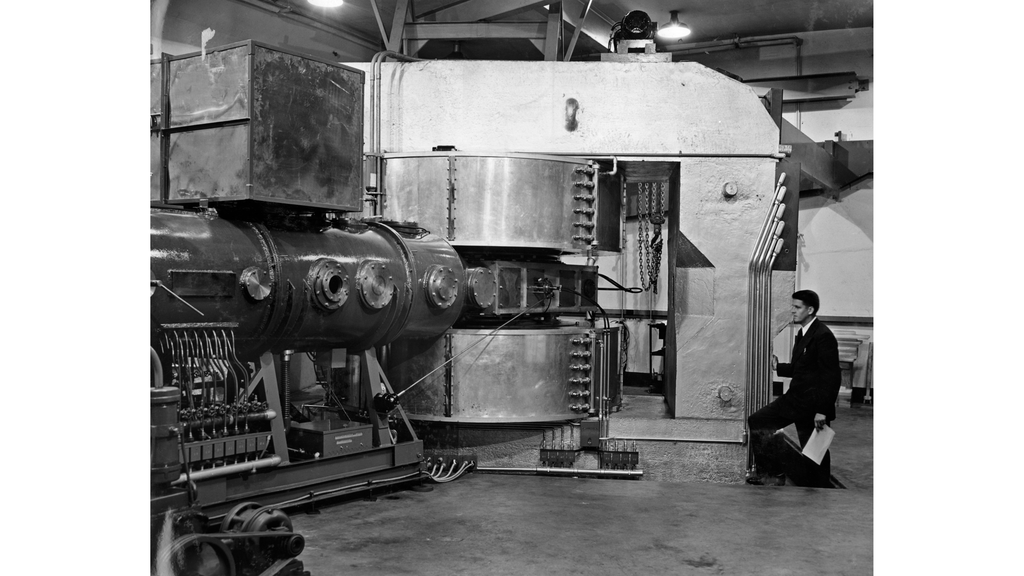
Dean Cowie with the 60-inch cyclotron in 1944, the year it began operation. The DTM cyclotron was specifically designed to produce abundant tracer isotopes for use by biologists throughout the Washington and Baltimore region.
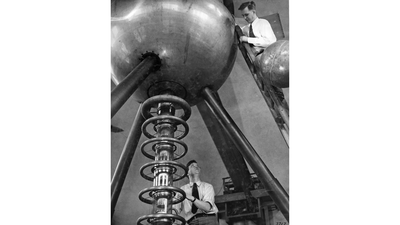
Merle Tuve with high-voltage generator
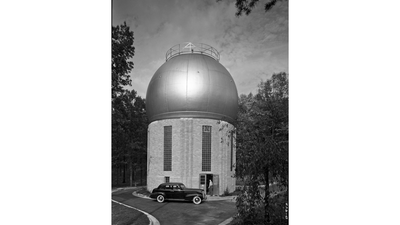
Pressure Van de Graaff generator
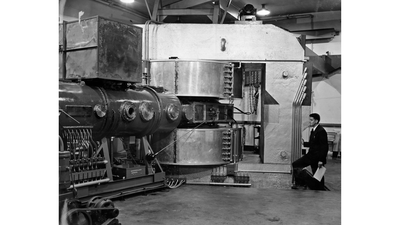
Cowie with the cyclotron
Establishing the Biophysics Section
After the war, Tuve, newly named director of DTM, met with Abelson to discuss potential new research avenues. They agreed that there were “some real areas to be looked at in biology” and in 1946 Abelson returned to DTM as chairman of a new Biophysics Section. He began assembling a research group, initially consisting of Roberts and Cowie, to use new physical methods to explore fundamental questions of biology.
This would be an exciting new endeavor, crossing a disciplinary border between the sciences. As the institution’s centennial history explains: “It would be difficult to name a pair of scientific disciplines less similar in their scope and context than cellular biology and nuclear physics. Prior to World War II, the study of microbes relied in large measure on powerful optical microscopes, selective staining techniques, and qualitative descriptions of cellular behavior. Nuclear physics, by contrast, boasted a two-pronged strategy of exacting experimental measurements coupled with abstract theoretical modeling. The Carnegie biophysics effort, which required expertise in both nuclear physics and cellular biology, was thus the epitome of interdisciplinary research.”
The shift from nuclear physics to biophysics was not entirely surprising. The group had already collaborated with biologists during the pre-war years, and the cyclotron had always been intended as an isotope factory. Radioisotopes were transforming biology, and as Roberts would later put it, the use of tracers "clearly opened opportunities for answering questions that had previously been unapproachable." Abelson later described their hope that “physicists with their penchant for analysis and separation of variables and their ability to devise new instrumentation, might be able to crack some of the complex puzzles in the realm of living matter.”
In the post-war period, with the atomic bomb fresh in memory, many nuclear physicists found themselves uncomfortable with the implications of their work. The prospect of turning the technologies of nuclear physics to peaceful ends gave biophysics a particular appeal. In November 1946, DTM hosted the Ninth Washington Conference on Theoretical Physics, devoted to "The Physics of Living Matter." The conference brought together distinguished atomic scientists with leading biologists to explore a new “physics of life.”
In the following summer of 1947, at Abelson's suggestion, Roberts headed to Cold Spring Harbor for an intensive bacteriophage course at Carnegie’s Department of Genetics. He returned, as one account described it, "thoroughly infected with enthusiasm for bacteria and viruses." Abelson spent that summer at the Marine Biological Laboratory at Woods Hole, immersing himself in how conventional biologists approached and understood their work.
While launching their initial research program, the group continued to educate themselves about general biology, microbiology, physical chemistry, and biochemistry, and cultivated relationships with biologists. By 1951, the Biophysics Section had added physicist Roy Britten and the group’s first biologist, Ellis Bolton, to the team and homed in on a research focus.
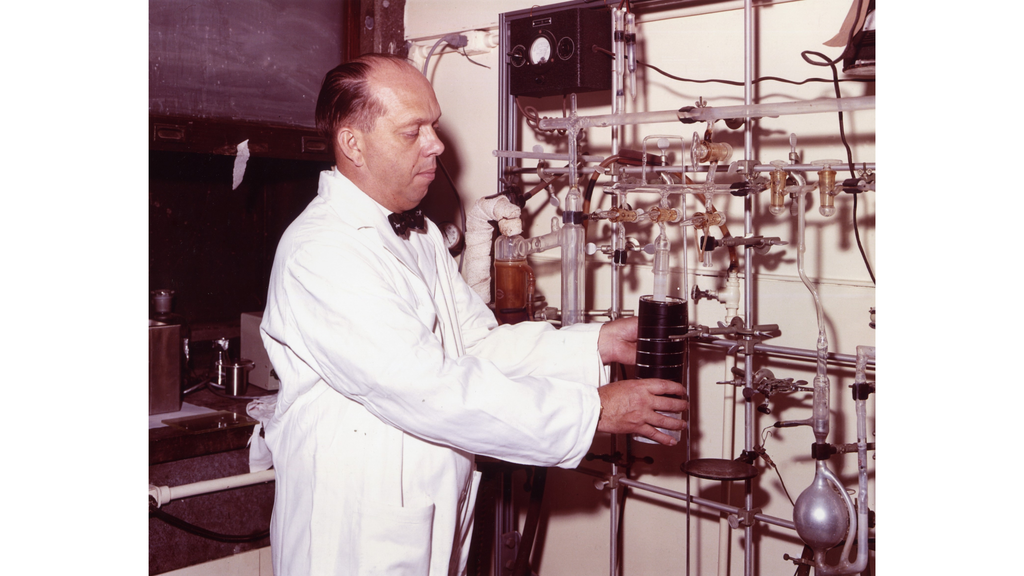
Phillip Abelson preparing a sample for isotope analysis. In 1946 Abelson returned to DTM as chairman of a new Biophysics Section and began assembling a research group to use new physical methods to explore fundamental questions of biochemistry.
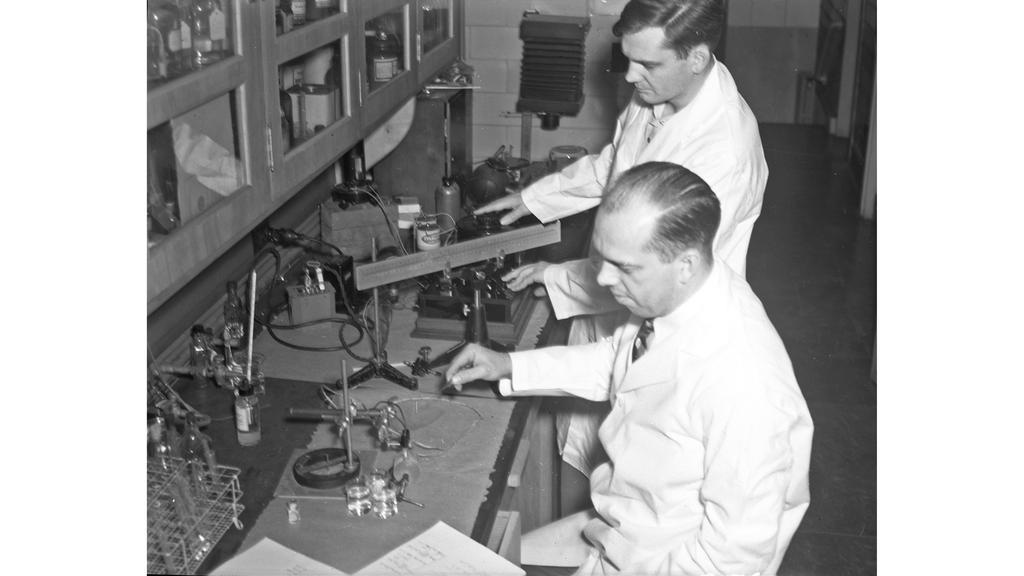
Philip Abelson and Roy Britten conducting biophysics experiments at DTM in 1952. By 1951, the Biophysics Section had homed in on a research focus.
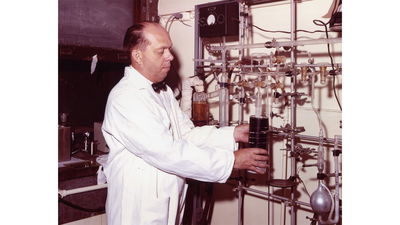
Abelson

Abelson and Britten
Unlocking the Secrets of E. coli
Following Roberts' visit to Carnegie’s Department of Genetics at Cold Spring Harbor, the group had selected a bacterium called Escherichia coli for intensive study. E. coli appealed to the group due to its simplicity and how easy it was to cultivate, growing quickly and reliably. This microorganism would become a widely adopted laboratory model, just as the fruit fly had become the essential model for genetics research.
The problem the group set for itself was ambitious: To work out, in detail, the chemical processes by which this single-celled organism organized energy and chemicals from its environment to produce more of itself.
The basic experimental design was simple. The team grew E. coli cultures and fed them materials containing radioactive isotopes of common elements like carbon, phosphorus, and sulfur. After several cell divisions, they pulverized the bacteria and separated their molecules using paper chromatography, a technique that exploits how liquids drag different molecules at different speeds along a sheet of paper depending on various material properties, such as their size and arrangement of electrical charges. By placing a photographic emulsion over the paper and seeing where the film was exposed and darkened by radiation, they could identify which molecules had become radioactive, revealing the pathways of chemical synthesis within the bacterium.
As Abelson later recalled, almost every day brought something new and “it was great fun to know that you were doing something that had not been done before.” The team devised a method for using a radioactive carbon isotope to track how the microbes sourced the raw materials to manufacture the biological molecules needed to perform different cellular functions. This enabled them to discover the synthesis pathways for 15 of the 19 amino acids found in E. coli.
Over years of rigorous experiments, the five members of the Biophysics Section compiled an extensive body of knowledge about the molecular processes within E. coli. Their resulting book, Studies of Biosynthesis in Escherichia coli, published in 1955, marked the first time that so many of the details of the metabolism of an organism had been laid out. It became an essential reference for a generation of molecular biologists, exerting significant influence during a formative period in the field's development.
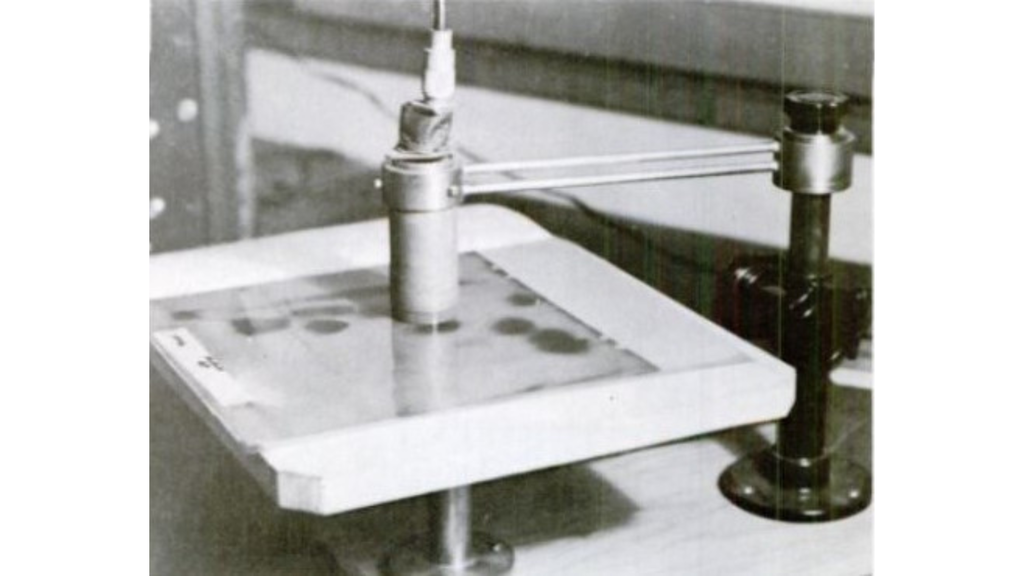
Counter used by the Biophysics Section to measure samples and chromatograms. The group used paper chromatography to reveal the pathways of chemical synthesis within the bacterium E. coli.
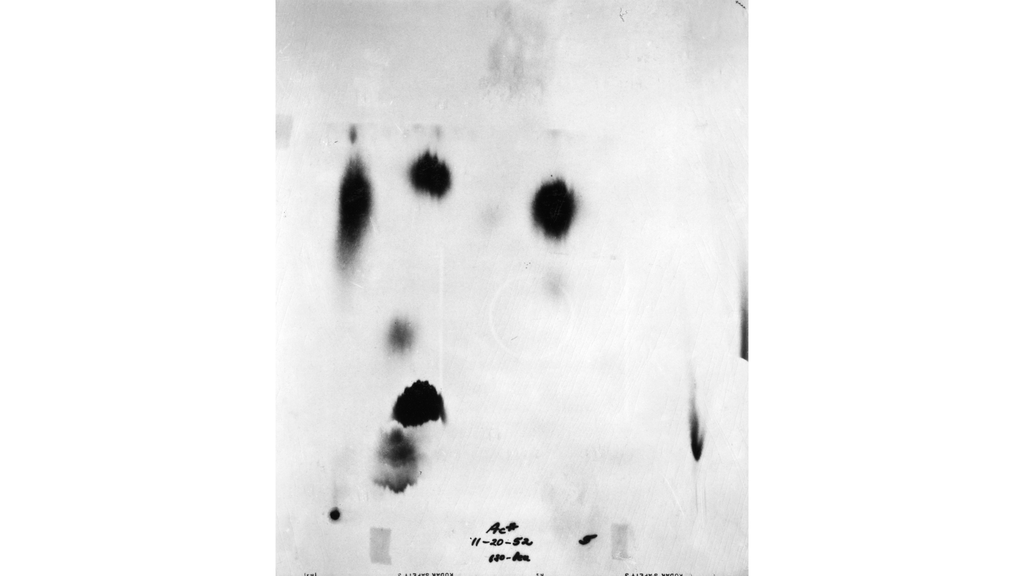
Autoradiograph of chromatogram of hydrolyzed protein from cells from 1952.
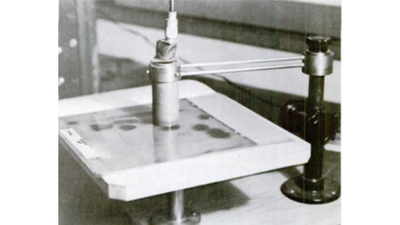
Counter
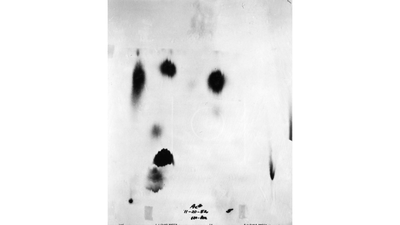
Chromatogram
Evolution and Dissolution
The group's work continued to evolve. They moved from studying small molecules to tackling the more complex problem of protein and nucleic acid synthesis and, eventually, the structure of chromosomes. Bolton and Brian McCarthy, a later addition to the team, invented the agar column technique to study RNA, with which Britten discovered that animal chromosomes contain many repeated identical structures. The group would ultimately publish approximately 200 papers and two additional books.
But the field around them was changing. By the 1960s and 1970s, the landscape had transformed, and the Biophysics Section had lost its distinctiveness. What had once been a pioneering effort at DTM had become standard practice at molecular biology laboratories worldwide. Carnegie’s own Department of Embryology had redirected its efforts in the 1960s away from anatomy and reproductive biology to embrace new techniques of molecular biology. When Abelson became president of the institution in 1971, he and the board of trustees concluded that the biophysics group no longer occupied the unique position that justified Carnegie's support.
When the Biophysics Section was terminated three years later, it marked the natural conclusion of a productive three-decade endeavor on an interdisciplinary frontier. The group exemplified Carnegie Science’s tradition of bringing together curious and innovative researchers from different fields to tackle fundamental questions about the natural world. Its history stands as a testament to the institution’s willingness to support bold, boundary-pushing ventures that expand the frontiers of scientific knowledge.
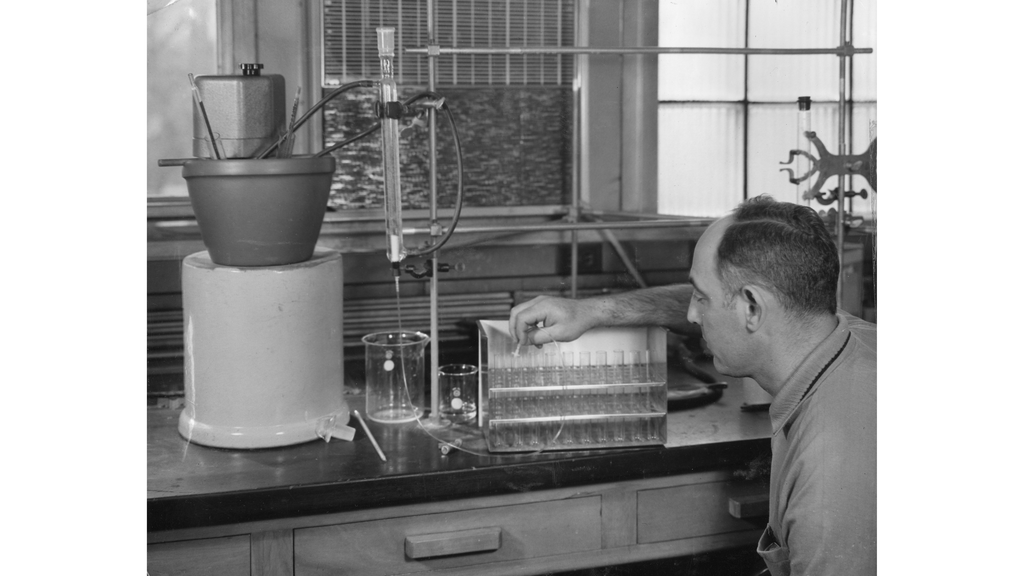
Ellis Bolton shown with the agar column experiment in 1962. Bolton co-invented the agar column technique to study RNA, with which Roy Britten discovered that animal chromosomes contain many repeated identical structures.
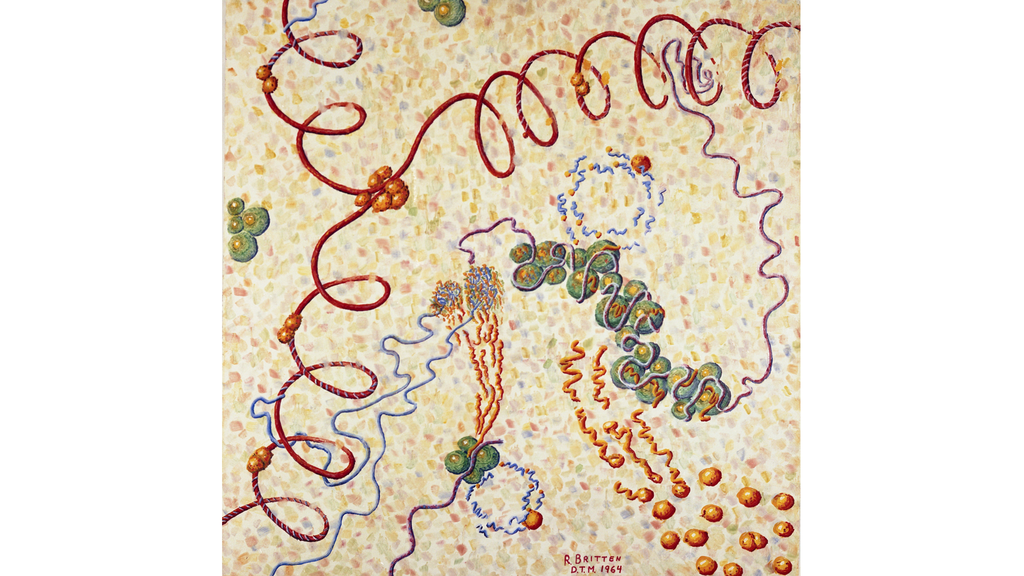
The Biophysics group would ultimately publish approximately 200 papers and three books. This painting by Roy Britten titled "Macromolecular Metabiology," was used for frontispiece of their 1964 volume "Studies of Macromolecular Biosynthesis."
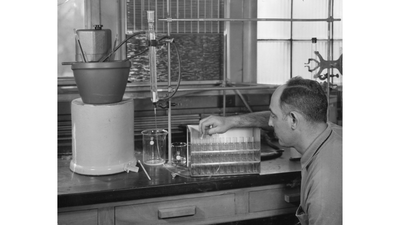
Bolton agar column
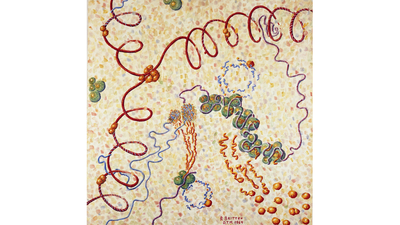
Macromolecular Metabiology
Bibliography
Abelson, John and Phillip H. Abelson. Uncle Phil and the Atomic Bomb. Roberts and Company Publishers, 2008.
Abelson, Philip H. “Genesis and Evolution of the Biophysics Program,” March 18, 1953. Department of Terrestrial Magnetism General Files, Carnegie Science Archives, Washington, DC.
Abelson, Philip H. “Philip Hauge Abelson – Session III,” Interview by Amy Crumpton, July 3, 2002. Oral History Interviews Collection, Niels Bohr Library & Archives, AIP.
Brown, Louis. Centennial History of the Carnegie Institution of Washington: The Department of Terrestrial Magnetism. New York: Cambridge University Press, 2004.
Carnegie Institution of Washington. Year Book 74. Washington, DC: Carnegie Institution of Washington, 1975.
Carnegie Institution of Washington. Year Book 76. Washington, DC: Carnegie Institution of Washington, 1977.
Keller, Evelyn Fox. “Physics and the Emergence of Molecular Biology: A History of Cognitive and Political Synergy.” Journal of the History of Biology, 23(3), 389-409.
Rasmussen, Nicolas. “The Mid-Century Biophysics Bubble: Hiroshima and the Biological Revolution in America, Revisited.” History of Science, 35(3), 245-293.
Roberts, Richard B., edited by. Studies of Macromolecular Biosynthesis. Carnegie Institution of Washington, 1964.
Roberts, Richard B., Philip H. Abelson, Dean B. Cowie, Ellis T. Bolton, and Roy J. Britten. Studies of Biosynthesis in Escherichia coli. Carnegie Institution of Washington, 1955.
Trefil, James and Margaret Hindle Hazen. Good Seeing: A Century of Science at the Carnegie Institution of Washington, 1902- 2002. Washington, DC: Joseph Henry Press, 2002.
